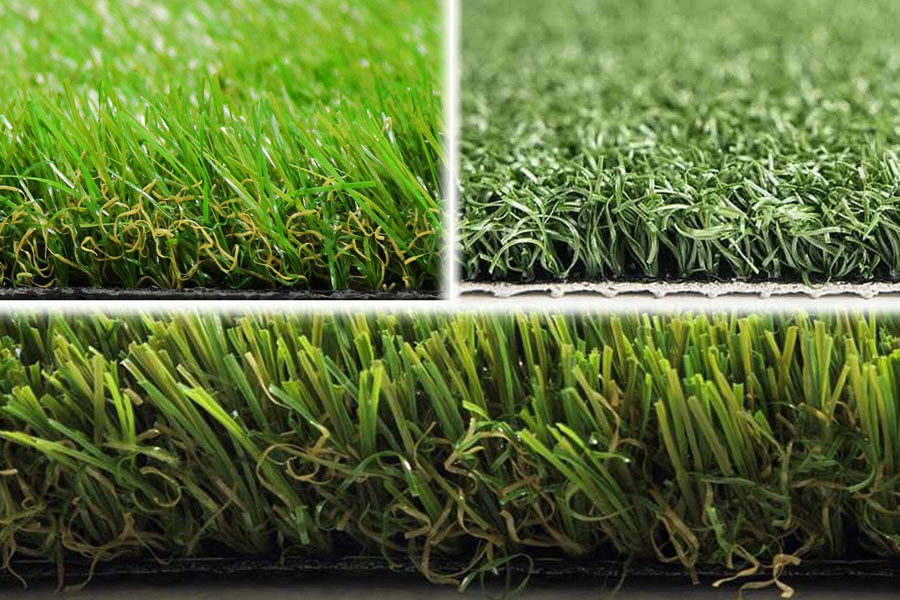What is the best material for artificial grass? Unpacking the differences between Nylon, Polypropylene and Polyethylene
Let’s face it. Artificial grass is an investment in your property.
While the initial outlay of installation and fitting may cost upfront, you can’t deny the many long term benefits it’ll give. Artificial grass is low maintenance, looks great all year round, is pet friendly and ultimately saves you time and money as you won’t have to mow, water or fertilise it all.
Now before you make a purchase, it’s important to understand the different types of artificial grass that’s readily available on the market. In this guide, we delve into the three main types – Nylon, Polypropylene and Polyethylene – and outline the core differences between them all, so you can make the best informed decision for your property.
Nylon

Nylon is the strongest and most resilient type of artificial grass. If you’re not sure what that means – nylon is basically the dominant fibre choice for commercial carpets and seatbelts, due its high level of tensile strength and durability. It’s strong.
Advantages
- As nylon is so strong, it is highly resistant to UV damage and heat. It’s the perfect choice for hot climates as it’ll retain its vibrant colour for many years to come.
- Nylon is extremely resilient, meaning that the individual fibres of the turf will naturally spring back and keep upright. It’ll essentially keep its shape for longer than other types of artificial grass.This makes it very low maintenance, not to mention, long-lasting as well.
Disadvantages
- The main disadvantage to nylon is that it’s by far the most expensive type of artificial grass. While it is extremely durable and resilient to external environmental factors, it can make installation very expensive.
- As the material is so strong, it doesn’t quite have the same level of softness as the other types of artificial grass.
Polyethylene

Polyethylene is essentially the economic alternative to nylon. Perfect for installations on a budget, it provides you with a natural and classic look, that’s also soft to the touch.
Advantages:
- If you’ve got a pet, then polyethylene is the type of grass you’d want to consider. It’s extremely resistant to water absorption, meaning it won’t take on much pet urine smell.
- Polyethylene is softer than nylon. It also looks and feels the most like real grass.
Disadvantages:
- Polyethylene doesn’t brave the weather as well as nylon. It’s susceptible to UV degradation, so isn’t quite suited to hot climates. You can combat this with UV stabilizers, but this will add to your overall costs.
Polypropylene

Polypropylene artificial grass is typically the cheapest option out of the three types. However, like the old adage goes, you most certainly get what you pay for.
With polypropylene, it’s worth utilising this material only for small and dry spaces.
Advantages:
- It’s highly cost-effective. If you’re fitting out a small space, it’s the cheapest option.
- Similar to polyethylene, polypropylene is great at absorbing moisture, making it a suitable choice for pets.
Disadvantages:
- Polypropylene is thin and soft. This can be both an advantage and a disadvantage as while it’ll feel nice, it isn’t as strong and resilient as the other types.
- Polypropylene can get worn out quite easily and as such, isn’t as long-lasting.
Which artificial grass material is the best?
With artificial grass, there is no one material that is “best” – it’s really only the one that is best for you, your needs and your budget.
Everybody’s home and outdoor space is going to be different, with varying levels of foot traffic, including anything and everything to children, pets and adults. Out of the three types we’ve discussed, there really is no right or wrong choice.
Conclusion
All in all, as long as the artificial grass you’ve chosen is the best for your needs and meets your budget, then it’ll be a success. Just make sure you consider the different types we’ve gone through as above and take the time to understand their key strengths and differences.






